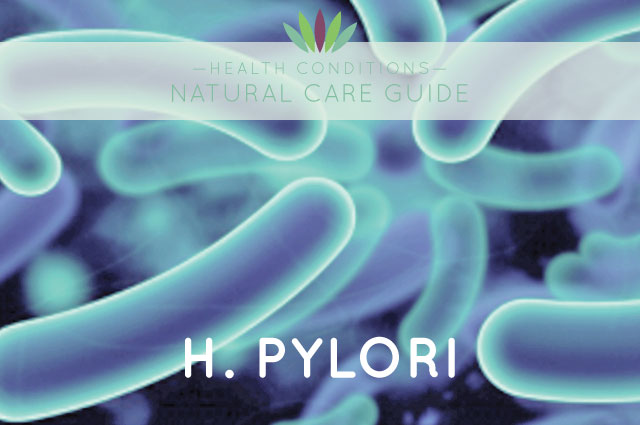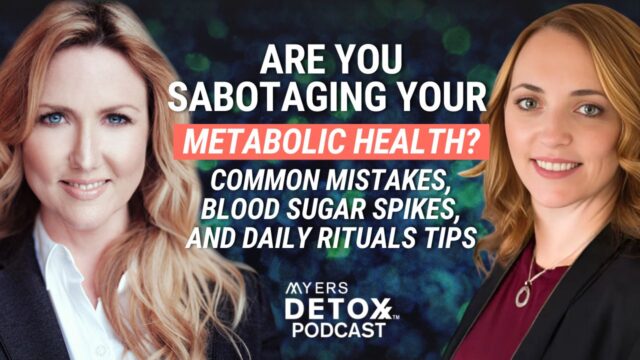Statistics indicate that over half of the planet’s population may be infected with Helicobacter pylori, most commonly known as H pylori. The CDC, the Center for Disease Control, estimates the world infection rate to be two-thirds, though infection rates in the US are lower.
As my father died of stomach cancer, caused by h pylori, and I was recently diagnosed with this common infection, I thought it important to inform you of the possibility that you could be infected. If you have frequent stomach aches, ulcers, or family history of stomach cancer, I would certainly get checked or follow the simple treatment guidelines below and get checked after treatment.
The discovery of Helicobacter pylori, a spiral bacterium that lives in the inhospitable environment of the human stomach, must rank amongst the greatest medical triumphs of the twentieth century. Two Australian doctors, Barry Marshall and Robin Warren, discovered the bacterium in 1982. It took six long years for the medical profession to begin to acknowledge the importance of Marshall and Warren’s work and the first clinical treatment trial was conducted in 1987. Over half the planet’s population is purported to be carrying the bacteria and an estimated 5,000,000 cases of gastric cancer and duodenal ulcer occur annually as a result of the infection.
Figures show that up to 20% of young adults and about 50% of those over 50 are infected in the West, indicating that rates of infection are falling. This may be the result of improved living conditions and increasing antibiotic use, but this is open to speculation as we’re not sure how the infection is transmitted. A recent study in South America found H. pylori under index fingernails in over half of the participants and it is commonly found in the mouth of infected individuals implicating a gastro-oral route of contamination.
Initial research on H. pylori focused on gastric complications, finding the bacteria implicated in 99% of duodenal ulcers. In addition, approximately 60% of gastric ulcers and up to 80% of stomach cancers are associated with the bacteria. The association with stomach cancer has gained H. pylori the doubtful accolade of being the only bacterium recognized as a Grade 1 carcinogen by the World Health Organization. Its presence is estimated to increase the likelihood of stomach cancer six fold.
Actions of H. pylori
One of the major consequences of H. pylori infection is its effect on acid production in the stomach. If the bacteria colonized the area where the stomach joins the small intestine, it can affect the cells that control stomach acid secretion. This can lead to overproduction of hydrochloric acid, paving the way for ulceration. However, if the bacteria colonize the central part of the stomach, the acid-producing cells themselves are affected and less acid is secreted, causing hypochlorhydria or low stomach acid. The consequence of low stomach acid is low B12, since it is difficult to assimilate the nutrient from animal protein if you do not have adequate stomach acid. Some people escape these complications and acid production is unaffected although gastritis or stomach inflammation always accompanies infection.
H. pylori is able to “glue” itself to cell surfaces under the mucosal layer of the stomach, thus protecting itself from immune reactions. Chronic gastric inflammation results as the immune system fails to eradicate the invader and many oxidizing agents are released. Possibly as a result of these oxidizing reactions there are measurably lower levels of vitamin C and other antioxidants in the gastric juice of sufferers. H. pylori’s survival in the stomach depends on its ability to neutralize stomach acid through the production of urease, which reacts with urea to form ammonia. This ammonia along with other products of H. pylori metabolism is toxic to human cells.
H. pylori infection can be a chronic process lasting for decades and the combination of complications can have far-reaching effects on the health of the person carrying the infection, particularly if their nutritional status is compromised. Like any infection, it is opportunistic and will thrive if its host is not healthy.
Illness Caused by H. pylori
The non-gastro-intestinal consequences of H. pylori infection have only been a subject of research in the last 10 years, yet when Barry Marshall first began treating H. pylori he found unrelated conditions clearing up on remission of the infection. Among these were skin conditions, depression, low energy levels and headaches. Subsequent findings have shown a relationship with rosacea and hives. These conditions may be linked in part to increased gut permeability, or leaky gut, associated with H. pylori.
In addition to influencing gut permeability, H. pylori infection can also impede the absorption of iron and vitamin B12 by affecting digestive activity in the stomach and duodenum. This may contribute to the slightly raised risk of cardiovascular problems in sufferers, although these may also be related to other effects of infection such as low levels of antioxidants or high levels of inflammation. Other vascular conditions such as headaches, migraines and Reynaud’s phenomenon have all been linked with H. pylori.
Higher rates of infection than expected have been found in those suffering with autoimmune diseases such as vitiligo, rheumatoid arthritis, Sjogren’s syndrome and autoimmune thyroiditis, but the mechanism in this connection is not yet understood. H. pylori has also been found in bile and in the liver as well as in many sites in the mouth where it is associated with periodontal disease and halitosis. Recent work has found connections with hyperismus gravidum (a severe form of morning sickness), spontaneous recurrent abortion and in colon and pancreatic cancer.
Symptoms
Unfortunately as yet, there are no generally accepted symptoms, although pain after eating, a classic sign of duodenal ulcer, may be taken as one. Dyspepsia, upset stomach or indigestion, does not seem to be particularly related to infection, but nausea, chronic vomiting, gas, diarrhea, constipation, acid reflux, and ulcer-like symptoms are somewhat common in H. pylori sufferers, as is a high Body Mass Index. Researchers have found that H. pylori causes severe morning sickness in pregnant women. In one study, 90% of women with severe morning sickness were infected with H.pylori. Gastritis, or inflammation, of the stomach is a classic sign. I have had this since I was a child — unexplained pain due to swelling and inflammation of the stomach in the upper left portion of my ribcage.
Risk Factors
Between 10-20% of those with H. pylori will experience peptic (gastric and duodenal) ulceration, and approximately 1% will experience stomach cancer as a result of the infection. These outcomes are due to the complex interaction between genetic tendencies, the virulence of the strain of H. pylori and environmental factors. For example, genes influence the development of gastric cancer, which is more prevalent in type A blood group, and of duodenal ulcers which are more prevalent in type O. H. pylori itself has different strains of which cag A is the most virulent and most strongly associated with ulceration and cancerous outcomes. Environmental influences such as diet, overcrowding, poor water supply and hygiene also impact on acquisition rates.
Diagnosis
Several methods may be used to diagnose H. pylori infection. These tests are used to detect an H. pylori infection in the stomach and upper part of the small intestine (duodenum). If your spouse or long-term partner has been found positive, then you may well consider testing, as over 70% of partners have been found to share the infection. Guidelines suggest that people with a family history of stomach cancer should also be tested and treated.
- Blood test. Serological, or blood serum, tests that measure specific H. pylori IgG antibodies can determine if a person has been infected. The sensitivity of these tests range from 80% to 95% depending upon the assay used. This is the test I had. It is not definitive, as the test is not 100%, but it was enough info for me to seek treatment. I did a retest to prove eradication of H. pylori with the definitive stool test.
- Breath test. In this test, the patient is given either 13C- or 14C-labeled urea to drink. H. pylori metabolizes the urea rapidly, and the labeled carbon is absorbed. This labeled carbon can then be measured as CO2 in the patient’s expired breath to determine whether H. pylori is present. The sensitivity and specificity of the breath test ranges from 94% to 98%.
- Stool antigen test. A stool antigen test checks to see if substances that trigger the immune system to fight an H. pylori infection (H. pylori antigens) are present in your feces. This is the most accurate test to diagnose H. Pylori. As an FDN practitioner, I can do this test for you. You simply are sent out a test kit, poop in a cup and send it to the lab.
- Stomach Biopsy. Upper esophagogastroduodenal endoscopy is considered the reference method of diagnosis. During endoscopy, biopsy specimens of the stomach and duodenum are obtained and the diagnosis of H. pylori can be made by the biopsy urease test — a test based on the ability of H. pylori to produce urease. This is not necessary as we have far more sophisticated diagnostic methods that are not as invasive.
Dietary Recommendations
Most H. pylori infections are related to an imbalance of the proper bacteria in the intestinal system. The benefits of the probiotic family of lactobacilli have also been proven through research. Studies show possible benefits from fructo-oligosaccharides (FOS), the food for these beneficial gut bacteria as well. Various strains of Lactobacillus acidophilus, and Lactobacillus salivarius inhibit the growth of helicobacter in mice, probably through the production of lactic acid, interfering with H. pylori’s ability to stick to cells. The same study showed that as well as eliminating existing colonies of H. pylori, the presence of lactobacilli prevented colonization by the bacteria. Good bacteria colonization with probiotics is essential in creating an environment that does not support the growth of H.pylori (and many other bacterial and yeast infections). Ninety-five percent of people respond favorably to this strategy if they can also stop all sugar (which feeds bad bacteria) and restrict all their fluids to water only.
A diet based on optimum nutrition shows that genetic susceptibility to H. pylori can be modified and there is mounting scientific evidence to show that such a diet not only helps prevent acquisition of the bacteria but also protects from disease consequences in those who are infected. In one study, research on vitamin C in both mice and humans has shown that in amounts of 5g a day, it can rid the body of H. pylori in up to 30% of individuals. Epidemiological studies have also shown that diets high in fruit and vegetables, and therefore rich in vitamin C, are associated with lower rates of infection and less disease outcome when infection is present.
Fiber is essential for the proper functioning of the digestive system and there is an inverse association between fiber levels, particularly soluble sources from vegetables, oats, legumes and seeds, and duodenal ulceration and gastric cancer. Grains and legumes are fine if tolerated. The introduction of steel rolling mills to produce white flour in the latter part of the nineteenth century coincided with a rise in cases of duodenal ulcer. This is due to the fact that consumption of gluten causes H. pylori growth to explode. As such, gluten should be eliminated if you are found to be infected with H. pylori.
Six to eight glasses of water or 3 liters a day ensure proper hydration and optimal conditions for the mucus layer in the stomach. This is the simplest way to treat H. pylori. Many infections resolve with this simple treatment alone. Consumption of tea, both black and green, and red wine is associated with lower incidence of the infection, while coffee and spirits have negative associations.
Vitamin A has also been shown to increase mucous production in the stomach. This can be found in orange colored vegetables and cod liver oil, among other foods.
In laboratory cultures, the phenolic compounds in extra virgin olive oil had strong antibacterial effects against eight strains of H. pylori, including antibiotic-resistant strains. The compounds were also shown to be capable of remaining stable in the harsh acidic conditions of the stomach.
Foods to be avoided on any anti-H. pylori diet are those which allow the bacteria to proliferate: all sugar, fruit, gluten, chocolate, coffee, dairy products, processed meat, pickled products, refined grains (flour), and alcohol. Gluten and sugar in particular cause an explosive growth in the bacteria. These foodstuffs have all been associated in many research papers with higher incidence of, or disease resulting from, infection with H. pylori.
Many plants have shown an ability to kill H. pylori. Among the substances tested in the laboratory and found to have activity against the microbe is garlic, glycyrrhizic acid, Iceland moss, Manuka honey, cinnamon, garlic, capsaicin and Rheum palmatum (rhubarb root). Barry Marshall notes that H. pylori is sensitive to berberine, and that citrus seed extract is moderately effective in eradicating H. pylori. Mastic gum from the Pistacia lentiscus plant, an ancient remedy for digestive problems, is currently being used with some success.
Here is a summary of the dietary recommendations for h.pylori:
- You must drink 3 liters of pure spring water a day! This means drinking only water and eliminating soda, juice, milk, tea, and coffee. This simple measure is usually enough to eradicate the infection.
- Increase vitamin C rich foods — fresh vegetables — sweet peppers, green vegetables, watercress, for instance.
- Increase iron rich foods – dark leafy greens and legumes.
- Increase carotenoid and Vitamin A rich foods — carrots, apricots, parsley, watercress, spinach, cantaloupes, mangoes and sweet potatoes.
- Increase soluble and insoluble fiber — whole grains (if tolerated), legumes (if tolerated), vegetables and seeds.
- Eliminate gluten.
- Avoid smoked and pickled foods.
- Avoid sugar.
- Avoid table salt. Use colored sea salt instead.
- Avoid overeating. Eat until you are 80% full.
Medical Treatment of H. pylori
A medical doctor will want to treat your infection with antibiotics. This method will usually take at least two antibiotics with one to three rounds of each antibiotic. While this certainly does work in many cases, I feel antibiotics should be the last resort of treatment. Antibiotics wipe out the good flora in the intestines, which for most people is already poor and dysfunctional, leading to their infection of H.pylori in the first place. This intestinal flora is essential in maintaining proper immune system functioning. Antibiotics do work, but they are treating the symptoms, not the cause. It is overkill to use antibiotics when ninety-five percent of people respond favorably to taking probiotic supplements, eliminating all sugar (which feeds bad bacteria) and restrict all their fluids to water only. Remember, most h.pylori infections are not an emergency or life threatening. You can take your time with treatment.
Supplements
- Antibacterials. Garlic, citrus seed extract, mastic gum, and berberine are great to eradicate H. pylori. These can be found in a great formula called Pyloricil by Ortho Molecular Research. You can also take a great garlic product called Allimax that contains concentrated amounts of allicin, the active antibacterial part of garlic. Or simply eat two cloves of raw garlic per day.
- Manuka Honey. Take 1 teaspoon of honey 3 times a day for 3 months. This eradicates many cases of H. pylori. This is how I beat my h. pylori in addition to the Pyloricil mentioned above. I took Manuka Health 550 Manuka Honey (25+). This is the strongest antibacterial Manuka Honey you can buy. For more information, see my article Medicinal Manuka Honey.
- Antioxidants. Vitamins A (I get mine from Cod Liver Oil), Vitamin C and selenium, N-acetyl cysteine (glutathione), alpha lipoic acid will help to support immune function.
- Probiotics. Lactobacillus salivarius and Lactobacillus acidophilus are both found in HLC Intensive Probiotics are known to kill H. pylori. For more information on probiotics, read my article Probiotics–The Foundation of Health. I have my favorite recommended clinical strength probiotics in the Myers Detox Store.
- Gastro-intestinal. It is wise to increase your digestive strength and support the gut lining to help you digest foods and absorb B12. And since most people with h. pylori have impaired digestion I recommend a whole range of digestive aids:
- Digestive enzymes
- GB-3 with ox bile and pancreatin
- Mucosa Support to heal the gut lining
- Taking HCL is contraindicated for H. Pylori.
Alternative Treatments
Infrared saunas are a very important tool in your fight against h.pylori. Parasites like h. pylori are opportunistic infections that more easily harbor in bodies weakened by other chronic infections, heavy metal toxicity and nutritional deficiencies, of which most suffer in today’s toxic world. If you have an h.pylori infection, you likely have additional overgrowth of other bacteria and yeasts that contribute to gut dysbiosis. Bacteria, yeasts, fungi and h.pylori tolerate heat poorly, making saunas ideal to keep them under control. An infrared sauna is a great natural way to kill any kind of infection, including h. pylori, and aid any h.pylori treatment protocol. Many different types of infrared saunas are available in the Myers Detox Store.
Have you healed yourself from H.pylori naturally, without having to use antibiotics or using the suggestions I recommend? Is there anything I left out that you’d like to add? Tell me your story by leaving me a comment below. I want to know!











